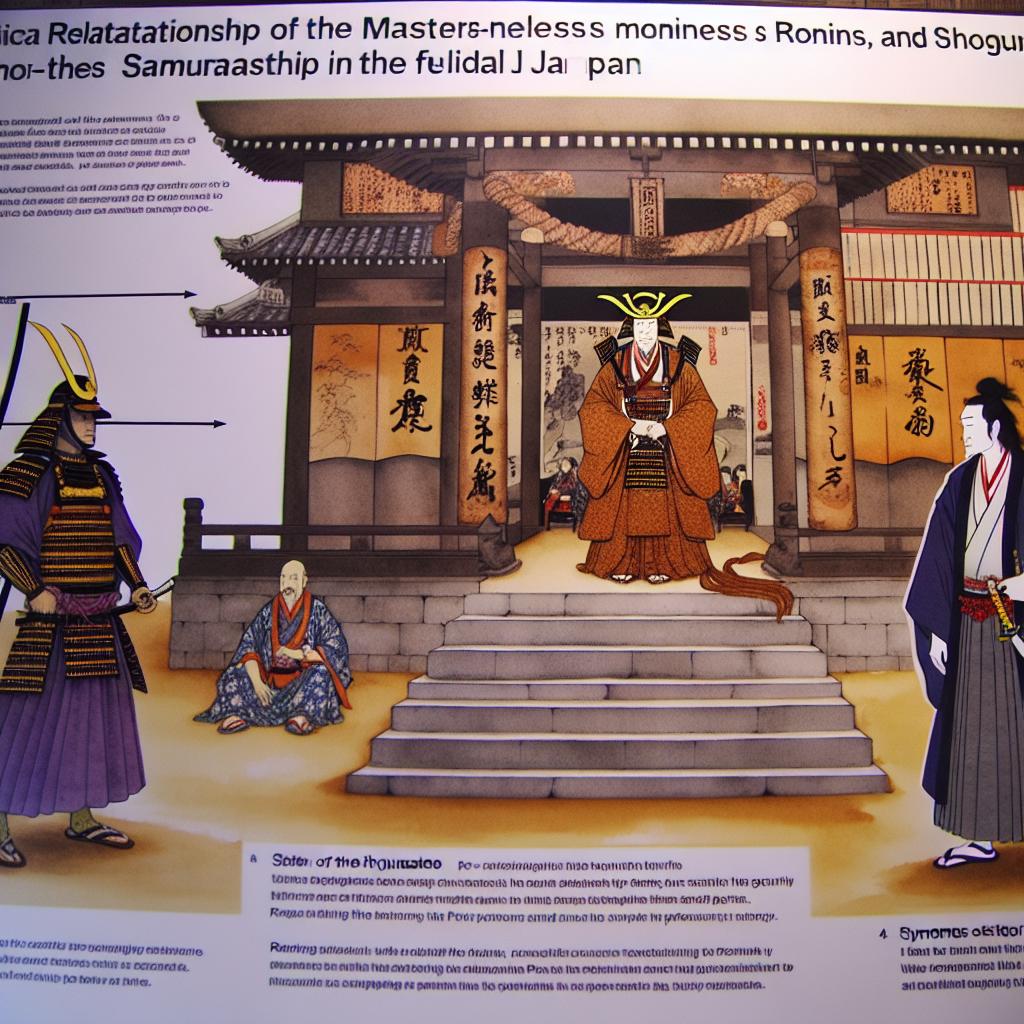The Historical Role of Ronins in the Shogunate Period
During Japan’s feudal era, the emergence and role of ronins played a pivotal part in the societal and political fabric of the time. In an era where the shogunate exercised significant power and authority, aiming to unify various regions under a centralized governance system, the figure of the ronin stood out. Defined as a samurai without a master or lord, the ronin presented a unique societal role that highlighted the complex dynamics within the shogunate system.
Origins of Ronins
The emergence of ronins was entwined with the socio-political upheavals of the feudal era. A samurai could transition into a ronin for various reasons. The most common cause was the loss of their daimyo’s (feudal lord’s) land, often resulting from political disputes, defeat in battle, or diminished favor with the central ruling shogunate. These scenarios were frequent in a landscape marked by territorial rivalries and shifting allegiances.
Moreover, the stringent regulations imposed by the shogunate on the codes of conduct and allegiance further complicated the status of the samurai. The absence of a master often left these warriors in vulnerable situations, forcing them to navigate uncertain futures. Changes within the ruling class frequently culminated in samurai becoming leaderless, thus thrusting them into the precarious identity of ronins.
Social Position of Ronins
Life as a ronin was often beset with substantial challenges. The societal perception of these masterless samurai was divided and multi-faceted. On one hand, ronins were viewed with suspicion and considered as individuals who failed to achieve the esteemed samurai duty of unwavering loyalty and service to their lords. This perspective painted them as dishonorable figures who were inconsistent with the ideals of the samurai code, or Bushido.
Conversely, there existed a view that portrayed ronins as romantic symbols—emblems of independence and resistance against the stringent societal order imposed by the feudal hierarchy. This duality in their social positioning reflects the broader complexities and contradictions inherent in the societal fabric of the time.
Economic and Political Impacts
From an economic standpoint, the plight of ronins was particularly dire. Stripped of a steady source of income and support due to their absence from a daimyo’s service, ronins faced a harsh new reality. To survive, many resorted to alternative livelihoods such as farming, becoming mercenaries, or in some cases, turning to banditry. These shifts were often a necessity for survival in a world where social mobility was limited and new opportunities scarce.
Politically, the presence of a significant number of ronins posed potential threats to stability. A substantial body of masterless warriors could become destabilizing if they organized or acted in concert. The Tokugawa shogunate recognized this underlying risk and employed strategies both to integrate these warriors into the formalized structures of power or to strategically eliminate groups perceived as threats, in order to maintain control and stability across the regions.
Notable Incidents Involving Ronins
Among the numerous incidents involving ronins, the story of the Forty-Seven Ronin occupies a central place in the annals of Japanese history. Occurring in the early 18th century, this incident represented the ultimate embodiment of the samurai code of honor and loyalty. The narrative unfolds with a group of forty-seven ronin avenging the forced seppuku (ritual suicide) of their master, Lord Asano, following a confrontation with a corrupt official.
Their actions underscored the complexities of the ethics inherent in samurai honor and loyalty, generating widespread debate regarding the virtues embodied within the samurai ethos versus the rigid legal mandates of the shogunate system. The legacy of this incident remains a powerful testament to the dichotomy of duty and moral righteousness against the backdrop of authoritative rule.
For anyone interested in delving deeper into the complexities of feudal Japan and the critical role ronins played, scholarly resources and dedicated historical texts or websites offer in-depth explorations of this fascinating era. The tales of ronins serve to illuminate a significant aspect of Japan’s storied past, underscoring the nuanced interaction between societal roles and the ever-evolving political landscapes of the time. Their legacy continues to resonate, revealing important cultural and historical insights into the intricate tapestry of Japan’s feudal era.

